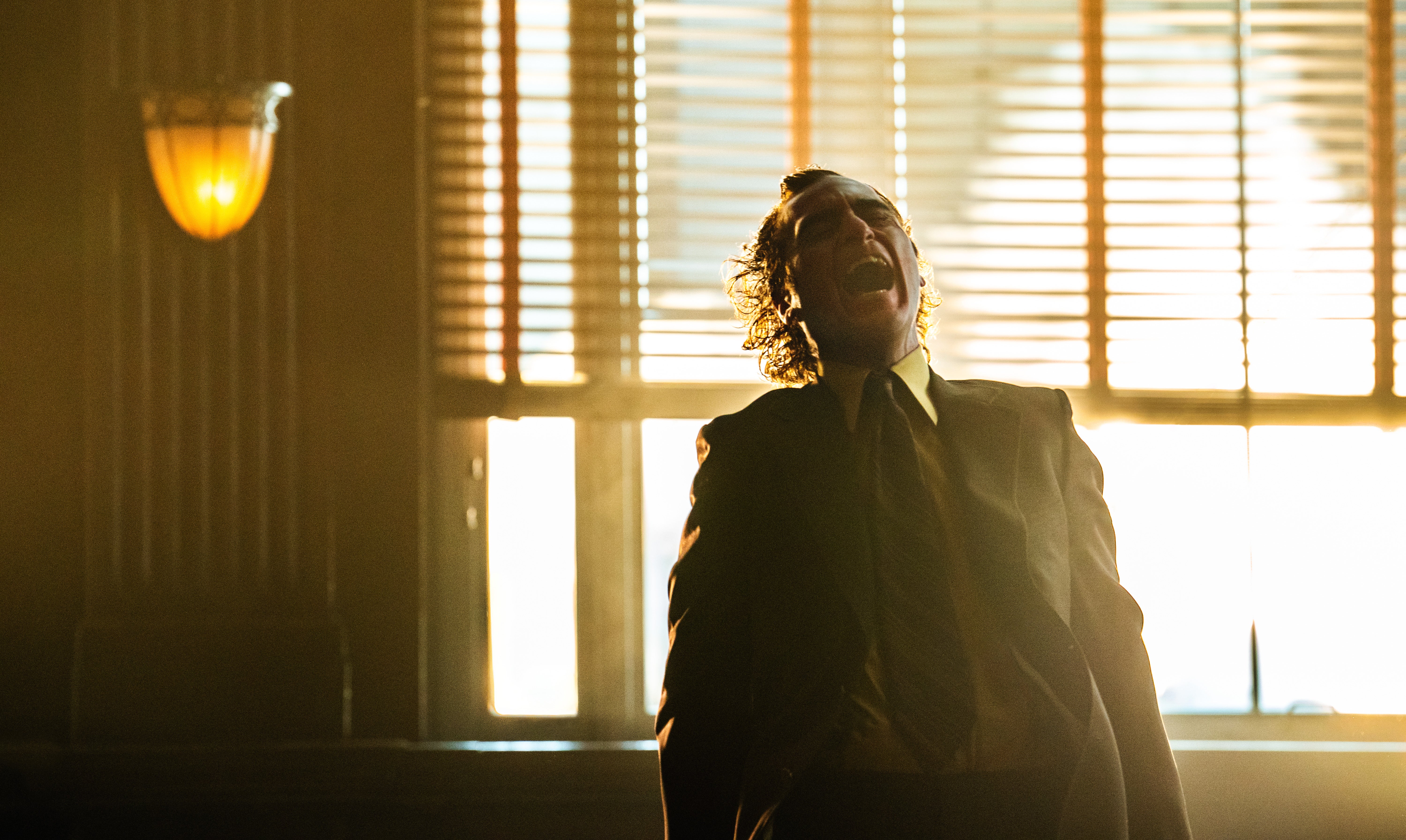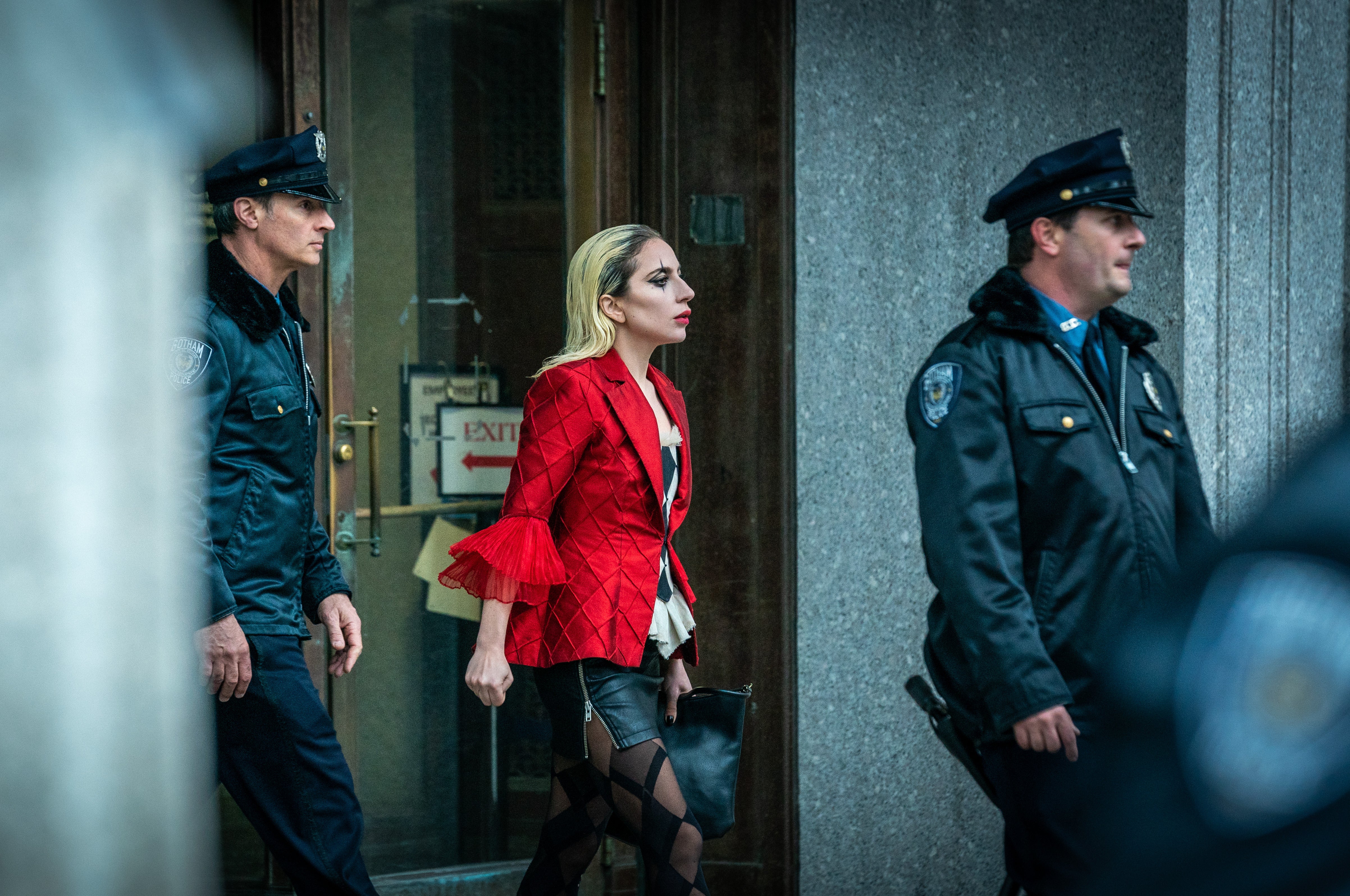Can Joker: Folie à Deux bring the movie musical back from the dead?
The public may have turned its back on musicals but Joaquin Phoenix’s new supervillain sequel prepares to do it once more, with feeling. Geoffrey Macnab thinks it could be exactly what the genre needs

Send in the clowns – don’t bother, they’re here.” These are words that are imprinted onto the memory of pretty much every musical theatre devotee. But, as the hotly anticipated supervillain sequel Joker: Folie à Deux prepares to tap-dance its way onto screens, never have they sounded so thuddingly literal.
The film, directed by Todd Phillips and premiering next week at the Venice Film Festival, is a sequel to 2019’s Joker – this time taking the form of an offbeat jukebox musical. Joaquin Phoenix, reprising the Oscar-winning role of Arthur Fleck (aka the clownish Batman baddie Joker), is joined this time by Lady Gaga, playing Fleck’s warped paramour Harley Quinn. When it first came out, Joker broke records at the box office, making over $1bn – a first for an R-rated movie. Bringing in Gaga, a pop music phenomenon, to play one of the most prominent comic characters of the past 20 years, could see the sequel hit even greater heights. It could be a shot in the arm for the movie musical as a genre – a shot it sorely needs.
Musicals, once a major force in Hollywood, have become as unchic a genre as any. Recent efforts such as West Side Story and In the Heights have bombed at the box office; this year’s lavish adaptation of Wicked remains a very uncertain proposition. Yet musicals are one of cinema’s richest and most vibrant traditions. If Joker can be their unlikely saviour, the industry should jump at the chance.
Musicals have come back from the dead before. Fifty years ago, That’s Entertainment! (1974) – a compilation movie full of dusty clips of old MGM musicals ranging from Fred Astaire in The Band Wagon (1953) to Gene Kelly in Singin’ in the Rain (1952) – was a surprise hit at the box office. The golden days of the musical were already a very long way in the rearview mirror. The Seventies was the era of sex, drugs, and easy riders: no one was paying much attention anymore to those all-singing, all-dancing extravaganzas the Hollywood studios used to make in better times. That’s Entertainment! was regarded as a quaint exercise in nostalgia, aimed squarely at older cinemagoers who were discomfited by the gritty in-your-face naturalism of the new Hollywood. But people turned out to see it in droves.
The Band Wagon song from That’s Entertainment! is among the several seminal musical numbers to feature in Joker: Folie à Deux, as it explores Arthur’s fantasy life and his illicit romance with Harley. The film promises to go even further than That’s Entertainment!, by turning a new, younger generation onto the forgotten glories of classic Hollywood musicals. It’s a fascinating prospect. Joker is a massively unsettling movie character, a murderer and psychotic, but the first film had a huge following among younger audiences. Now, they’ll see their favourite antihero suddenly begin to croon and tap dance.
Details of the movie, a sequel to 2019’s billion-dollar hit Joker, are being kept closely under wraps, but we know the basic plot. After unleashing civil mayhem at the end of the previous movie, Arthur, a tormented loner, is imprisoned in Arkham State Hospital for the criminally insane. Music then becomes part of Arthur’s rehab. As trade paper Variety reports, Arthur “ditches his medication and prances into a fantasy world that often plays like the MGM musicals of yesteryear on acid”.
One reason why musicals fell from grace was that Hollywood could no longer afford to pay for them. The Arthur Freed unit at MGM had been famous for the scale and extravagance of its movies (classics like An American in Paris, Easter Parade and The Pirate) as well as for their formal ingenuity – their astonishing feats with colour, choreography, song and movement. By the late 1950s, though, as television took a vice-like grip on leisure habits and cinemagoing numbers plummeted, the massive outlay on such films could no longer be justified. The new Joker movie, however, has a sizeable budget of its own that should allow Phillips to pay proper homage to such work. He has denied reports that the new film cost $200m but it’s clear he had enormous resources at his disposal.

On the face of it, the world of top hats, ball gowns and feathers depicted in Astaire films is a very long way removed from the dirty, crime-infested Gotham City inhabited by Arthur. Then again, many of the original Hollywood song and dance extravaganzas had a subversive underside too. Their characters often came from the same hardscrabble background as Arthur and they too grew up dreaming of showbiz glory.
Heroes in old Broadway and Hollywood musicals were often darkly narcissistic figures – just like Arthur himself. For example, the ruthless, go-getting protagonist in the Rodgers and Hart hit Pal Joey, made famous on stage by Kelly and played on screen by Frank Sinatra, was “completely amoral”, as Kelly called him. “Can you draw sweet water from a foul well?” indignant critic Brooks Atkinson famously asked in The New York Times after watching Kelly as Joey. It’s a question that can now equally well be put to Phoenix and Gaga about their repellent characters in the Joker sequel. Is it possible for a deranged sociopath with a violent personality disorder like Arthur and a manipulative criminal like Harley Quinn to create moments of beauty together? The answer has to be in the affirmative. As Hollywood history has continually shown us, the sweetest water indeed often comes from the foulest wells.

It’s a cliche of the genre that everybody working on musicals suffered for their art. Ginger Rogers’s dance shoes were filled with blood after her most punishing routines. Judy (2019), the Oscar-winning Judy Garland biopic starring Renée Zellweger, showed Garland being forced to take amphetamines when she was a young contract artist at MGM. Those astonishingly vibrant performances she gave in her early films had an edge for a reason. It’s easy to see traces of Garland in the Harley Quinn shown in the Joker sequel trailer, undergoing her rehab, pretending to shoot herself in the head with her fingers.
As she showed in A Star is Born (2018), Gaga shares Garland’s ability to convey both power and vulnerability, to look bedraggled and ordinary one moment and then utterly radiant the next. Garland was a troubled and tragic figure, but, performing on screen, at her best, she had a rawness and emotional force that knocked out audiences. Gaga possesses similar qualities. She and Phoenix have talked about not making their characters in the new Joker seem like professional singers with “vibrato and perfect notes”. Their goal, as Phoenix told Variety, was to be “nerve-racking but honest”. That’s exactly what you got from Garland at her best too.
Personal stories don’t come any ranker and more miasmatic than that of Arthur, the talentless would-be comedian who achieves celebrity through acts of extreme violence and nihilism. But even he might perhaps reach some form of grace and catharsis through his musical fantasies.

It is no coincidence that the best musicals (and gangster pics) have tended to be made during times of social and political turmoil. Both genres were at their peak in the depression era when there was mass unemployment in the US. Ninety years on, the Joker films, also made by Warner Bros, have some of the same grit and desperate energy as those Warner films of the 1930s about public enemies, fugitives on chain gangs and chorus girls desperate to high kick their way to fame and fortune.
There’s a vicious irony in a Joker film using a song like “That’s Entertainment”. Anarchic scenes of the clown’s supporters rampaging through the streets are obviously very different from the elaborately choreographed song and dance routines in the MGM movies. Nonetheless, if Arthur Fleck takes this level of pleasure in the old show-stoppers, younger fans of the Joker movies might very well do the same – and classic Hollywood musicals will then be on course to experience their biggest and most unlikely revival in years. The show, in other words, might go on after all.
‘Joker: Folie à Deux’ is in cinemas on 4 October
Join our commenting forum
Join thought-provoking conversations, follow other Independent readers and see their replies
Comments
Bookmark popover
Removed from bookmarks